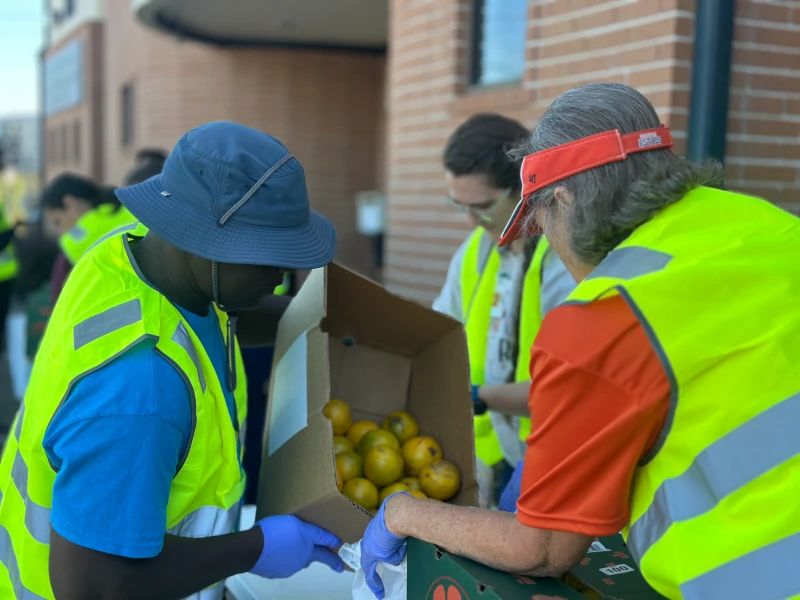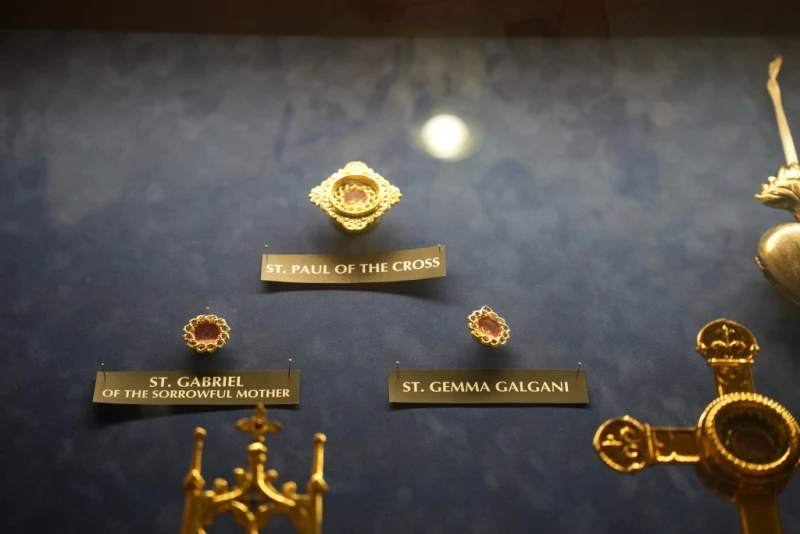

Volunteers prepare and distribute food to families coming through the drive-through distribution site at the Catholic Charities Diocese of Galveston-Houston Guadalupe Center, a food pantry near central Houston. / Credit: Photo courtesy of Catholic Charities of the Archdiocese of Galveston-Houston
CNA Staff, Nov 7, 2025 / 17:40 pm (CNA).
As federal food benefits have been frozen during the government shutdown, Catholic dioceses and charities around the country are holding emergency food drives and launching fundraising efforts.
Supplemental Nutrition Assistance Program (SNAP) benefits will resume once the government passes a bill to fund the federal government — but, more than a month into the shutdown, there is no set end date in sight.
Two federal district judges at the end of October moved to compel the Trump administration to pay for SNAP benefits, but because Congress has not yet authorized funding for federal government operations, the Trump administration asked an appeals court on Friday to block the orders and continue with partial SNAP payments.
The pause in SNAP benefits is estimated to affect about 42 million Americans.
In St. Louis, food pantries saw an influx of people in need. In response, parishes across the archdiocese are holding emergency food drives for the first two weekends of November.
Nearly 300,000 people in the area could “lose access to vital food benefits,” Archbishop Mitchell Rozanski said in a letter to pastors, whom he asked to “respond with love and generosity to this urgent need.”
“We are called to be people of faith and action,” Rozanski said. “And so, I ask the good people of our archdiocese to come together to help our neighbors who are in danger of going without their ‘daily food.’”
The archdiocese is working with the local Catholic Charities and the Society of St. Vincent de Paul to ensure that food pantries are full.
Julie Komanetsky, a spokesperson for the Society of St. Vincent de Paul in St. Louis, said the food drives are “bringing great results for our food pantries.”
“This is our faith in action,” she told CNA. “Like the story of the good Samaritan who sees the victim and cares for him, Catholics see that people need to be fed and they are responding. They are answering God’s call to be good Samaritans rather than indifferent bystanders!”
So far, the parish food drives have been “very successful and will help keep our pantries stocked and able to support the need,” Komanetsky said.
“Our hope for this effort is to keep all within the boundaries of our archdiocese from going hungry during this difficult time in our country,” she continued. “This is our united Catholic effort to let all people know that we see them, we hear their needs, and we will help.”
“Pope Leo tells us: Faith cannot be separated from love for the poor,” she continued. “This effort is a testament of our faith and our love.”
St. Louis is not the only archdiocese finding creative solutions to the SNAP crisis. In Connecticut, Hartford Archbishop Christopher Coyne has released $500,000 of emergency funding to food banks.
Coyne said the funding is being contributed “in the spirit of Jesus’ command to serve our brothers and sisters in need.”
“The Catholic Church provides relief and hope for God’s children,” Coyne said in a statement. “It’s what we have done for over 2,000 years and what we continue to do today.”

The Archdiocese of Galveston-Houston Catholic Charities is seeing a similar rise in need. Across its three food pantries Catholic Charities is extending hours and increasing distribution.
“Many families across our service area are struggling, worried about missing paychecks or not being able to put food on the table,” Cynthia Nunes Colbert, who heads the Catholic Charities of the Archdiocese of Galveston-Houston, told CNA.
The group is also offering emergency rental assistance to federal workers and is reaching out to the wider community for support by encouraging food drives, volunteering, and donations, Catholic Charities told CNA.
“Whether it’s through financial donations, food drives, or volunteering, together we can provide hope and stability during these uncertain times,” Colbert said.
As part of a nationwide effort, Catholic Charities USA launched a fundraising effort in light of the funding cuts. The funds raised will go directly toward buying and sending food to Catholic Charities groups across the country to support ministries such as food pantries and soup kitchens.
For families who rely on food assistance programs, this a “catastrophic moment” said CCUSA President and CEO Kerry Alys Robinson.
The government shutdown “has created incredibly serious, real-life consequences for millions of people, from furloughed federal workers to those living in poverty who will now struggle even more to provide for their families,” Robinson said in a recent statement.
Read More

![Missouri court says man can sue St. Louis Archdiocese over abuse he repressed for decades #Catholic
The Cathedral Basilica of St. Louis. / Credit: legacy1995/Shutterstock
CNA Staff, Oct 16, 2025 / 11:48 am (CNA).
A Missouri appeals court has ordered that an alleged victim of clergy sexual abuse can sue the Archdiocese of St. Louis, ruling that an arcane aspect of bankruptcy law does not negate the archdiocese’s potential liability for abuse that the plaintiff allegedly repressed for decades.The case touches on both the complex character of U.S. bankruptcy statutes as well as the often-protracted nature of abuse allegations, which frequently only come to light years or decades after the abuse is alleged to have occurred. In its Oct. 14 ruling, the Missouri Court of Appeals, Eastern District, said the alleged victim, John Doe, claims to have been abused at the St. Joseph’s Home for Boys in the late 1980s. Doe alleges that Father Alexander Anderson, who was assigned as a counselor to the home, sexually abused him; the plaintiff said he “reported the abuse [but] no action was taken,” according to the court. Doe “alleged he repressed his memory of the abuse until 2016,” the court said. He ultimately filed suit against the archdiocese in August 2022. The archdiocese argued in response that Doe’s abuse claim was effectively negated by two bankruptcy claims he had filed in 2008 and 2009. U.S. law dictates that when debtors file for bankruptcy, they create “an estate that includes nearly all of the debtor’s legal or equitable interests in property,” including legal causes of action. The archdiocese claimed that since Doe did not list his abuse claims as “exempted assets” in his bankruptcy proceedings, they became part of that “estate” and can only be administered by the trustee that handled those proceedings. The appeals court rejected the archdiocese’s argument, reversing a lower court decision and holding that Doe’s “cause of action” only arose when he said he remembered the alleged abuse in 2016, “well after” his bankruptcy filings. Doe’s standing to sue “did not accrue [when] the sexual abuse was allegedly committed” but rather when it was “capable of ascertainment,” the court held. The court’s ruling cited Missouri Supreme Court precedent, which holds that, in some cases of abuse, “the victim may be so young, mentally incompetent, or otherwise innocent and lacking in understanding that the person could not reasonably have understood that substantial harm could have resulted from the wrong.”The St. Louis Archdiocese did not immediately respond to a request for comment on the ruling on Oct. 16. This is not the first instance in which the archdiocese has been held accountable for abuse allegations that an alleged victim claimed to have repressed for decades.In 2023 the archdiocese agreed to pay a $1 million settlement to a man who said he was abused by Father Gary Wolken in the mid-1990s but repressed the memories until he was an adult. Wolken was in prison from 2003 to 2015 for sexually abusing another boy in the St. Louis area from 1997 to 2000.](https://unitedyam.com/wp-content/uploads/2025/10/missouri-court-says-man-can-sue-st-louis-archdiocese-over-abuse-he-repressed-for-decades-catholic-the-cathedral-basilica-of-st-louis-credit-legacy1995-shutterstockcna-staff-oct-16-2025.webp)



